Tasting Fall in Japan
Kabocha (Japanese pumpkins) are popular, along with chestnuts, sweet potatoes, ginormous grapes, sushi (always in season!), and Halloween

Hello! I’m glad you’re here. And since you are, would you do me and your country a favor? Vote in the upcoming election. It’s probably the most important of our lifetime. Our democracy is on the line—literally. So please send in that absentee ballot—or vote in person on Nov. 5. And tell your friends. In some states, including here in California, you can still register to vote. For more info, check this site: vote.org. As the saying goes, your vote is your voice. And you should not be silent.

Every time I return from Japan, friends and relatives ask, “What did you do?” “Where did you go?”
What they should ask, at least after my recent visit, is, “What did you eat?”

During a week’s stay (nine days in total of which two were spent traveling), we—my son and daughter-in-law and me—ate sushi (three times), artisan-crafted buckwheat soba, Chinese ramen, a German-style deli lunch, another lunch almost entirely composed of products made from kabocha squash (considered the pumpkin of Japan), chestnut confections with nutty texture and a hint of caramel, and green grapes the size of small eggs that are so sweet, crunchy and aromatic that they will spoil you forever after for the bland American standard Thompson seedless.

And that’s not all. There’s a tea shop on a sparsely visited area of northwest Kyoto that serves the most delectable cream-filled donut I’ve ever had. You can (and we did) order a light and oozy cheesecake too, with a side of those delicious Muscat Shine grapes, but the donut is what we came for.
You only get a small one that is little bigger than a donut hole, sugar-dusted, with custard peaked atop it in a pale yellow point. The whole thing goes down like a sweet cloud! What else do you need? Nothing. But we managed to polish off the cheesecake too.
And while Kyoto is incredibly crowded most days, this small shop (so many of the spots we went were small, with limited seating) is down a side street reached from a stop on a very old bus that travels along an ancient train track. (How that’s possible, I don’t quite know.) My son teaches English to a woman who told him about this place and several others we visited, but I’ve not been given permission to share the name or take pictures of anything except the food. So you’ll just have to ask someone who knows of this delightful bakery near the Rioanji Temple, which has a famous rock garden that we unfortunately didn’t visit.
Kabocha tales
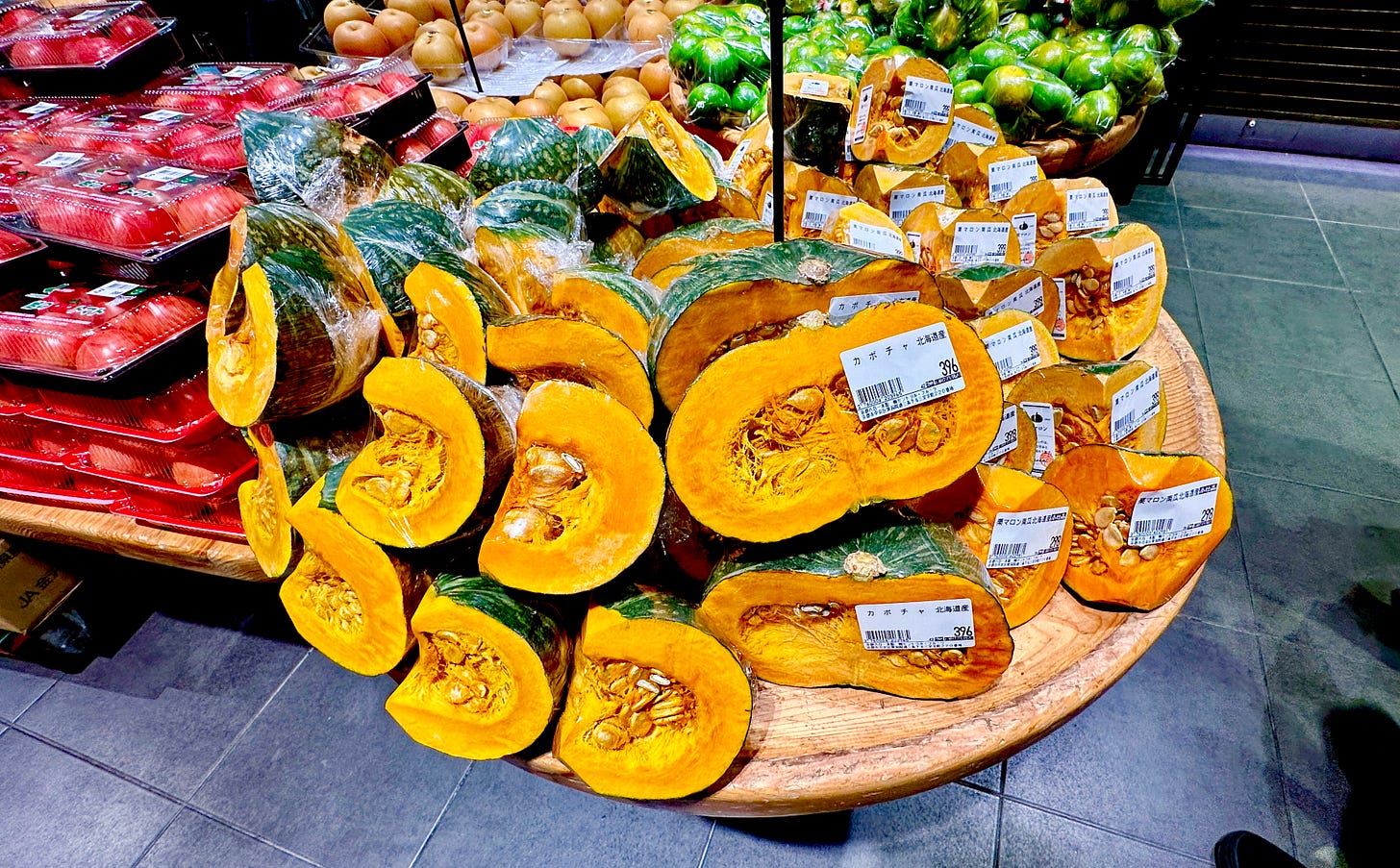
Kabocha, known as the Japanese pumpkin, is ever-present at this time of year, along with chestnuts and sweet potatoes—a kind of holy seasonal triumvirate that shows up in everything, both savory and sweet preparations.
As you do when something seems to be so ubiquitous as this golden squash, I assumed kabocha was indigenous to Japan, but it isn’t. Like almost all squashes, it likely originated in Mesoamerica and was first introduced to Japan by Portuguese traders who had acquired it in Thailand (then Cambodia) in the 16th century.1
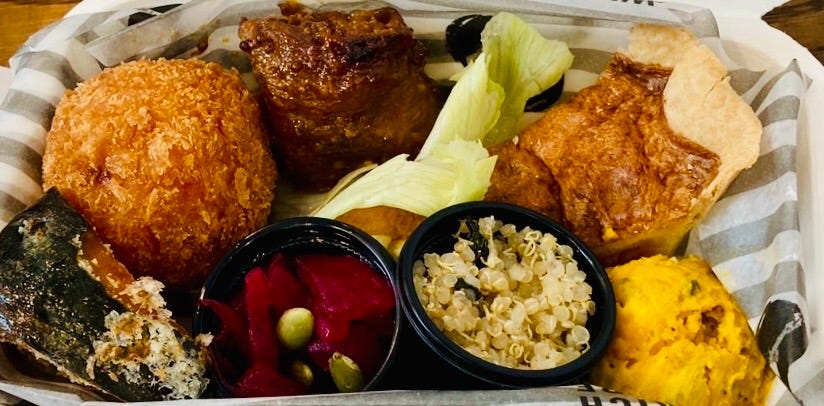
There are multiple species, but the one most prevalent in Japan is the cucurbita maxima, called seiyō kabocha, with the kuri kabocha or “chestnut pumpkin” (栗カボチャ) its most common variety both in Japan and here. Suited to cold climates, it has a long shelf life, high nutritional value (lots of beta-carotene, fiber and vitamin A), a sweet taste, especially in winter, and texture and flavor described—pretty accurately, I would say—as somewhere between a pumpkin and a sweet potato.
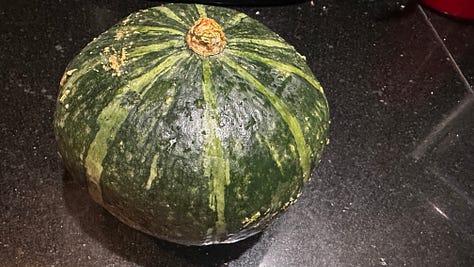

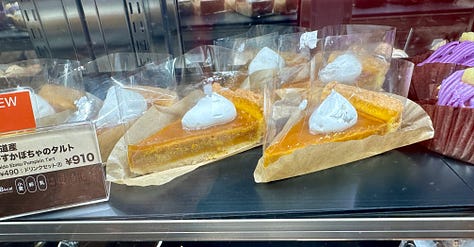
In Japan, kabocha is a popular ingredient on its own, in soups, tempura and even in western-style tarts and pies. (For a lot of interesting info, check out this article.) The “quintessential” dish, according to this source, is kabocha no nimono, a simple preparation in which the squash is cut into bite-sized pieces and simmered until soft in a soy sauce. Click here for a recipe.

I can’t wait to try this Japanese pumpkin in a pie! Maybe I’ll even dial down the pumpkin spice!
An important note: kabocha can be a bear to cut—it’s got a rind that’s thick and hard—much more so than one of your doorstep jack-o-lantern pumpkins. The skin is fine to eat, but a sharp knife and a steady hand is essential if you want to keep your fingertips while chopping this tough cookie—eh, squash—down to size!
Click here for a guide on how to cut a kabocha.
Halloween in Japan: treats, no tricks
Last December we were surprised to discover that Japan was awash in Christmas finery. Visiting again last month, I wondered if there would be the same explosion of Halloween-themed merchandise. Of course there was!
Everywhere there were jack-o-lanterns, spooky masks, whimsical costumes, ghosts and goblins, cookies and candies in the colors of Halloween—orange, black and white—with purple and gold thrown in. There were no house decorations that I saw—no pumpkins on doorsteps, ghouls in the window or spiderwebs hanging from the eaves. My daughter-in-law assured me that Japanese don’t go trick-or-treating—at least they didn’t when she was young, though that may be changing.
When I googled the holiday,2 it seemed it was more of a celebration for adults than children, a chance to dress up in funny or ghoulish costumes or as your favorite anime or manga characters and let it all hang out at street parties, night clubs and theme parks.

On the road again
Next up: there are more adventures afoot. Along with my wanderlusting husband, Jefferson Graham (you can find his excellent work here), I’m off to one of our favorite states, New Mexico, then shortly thereafter to California’s Gold Country. It’s fall in both places, so expect colors galore in future posts (we hope!). Just a year ago at this time, we took a memorable autumn trip to Nova Scotia and New England. Here’s a shot I took from the road in New Hampshire as leaves were just starting to turn.
Thanks for reading this week’s edition and for liking, commenting and subscribing to my newsletter. I hope you’ll tell your friends.
And last but not least, if you celebrated the Jewish New Year, a belated Shana Tova. Wishing you a happy, healthy, peaceful and sweet 5785 (yup, that’s what year it is on the Jewish calendar!). I wish the same for all my non-Jewish friends, our nation and the world. Amen.
See you next time!
Ruth

“Kabocha: Japanese Pumpkins and Squashes,” Gochiso History: Japanese Food History and Culture. https://gochisohistory.com/kabocha/#:~:text=Seiyō%20and%20pepo%20kabocha&text=It%20was%20brought%20to%20Japan,varieties%20during%20the%20Meiji%20era.
“Halloween in Japan: Costumes, Traditions and Where to Go,” Japan RailPass. https://www.jrailpass.com/blog/halloween-in-japan





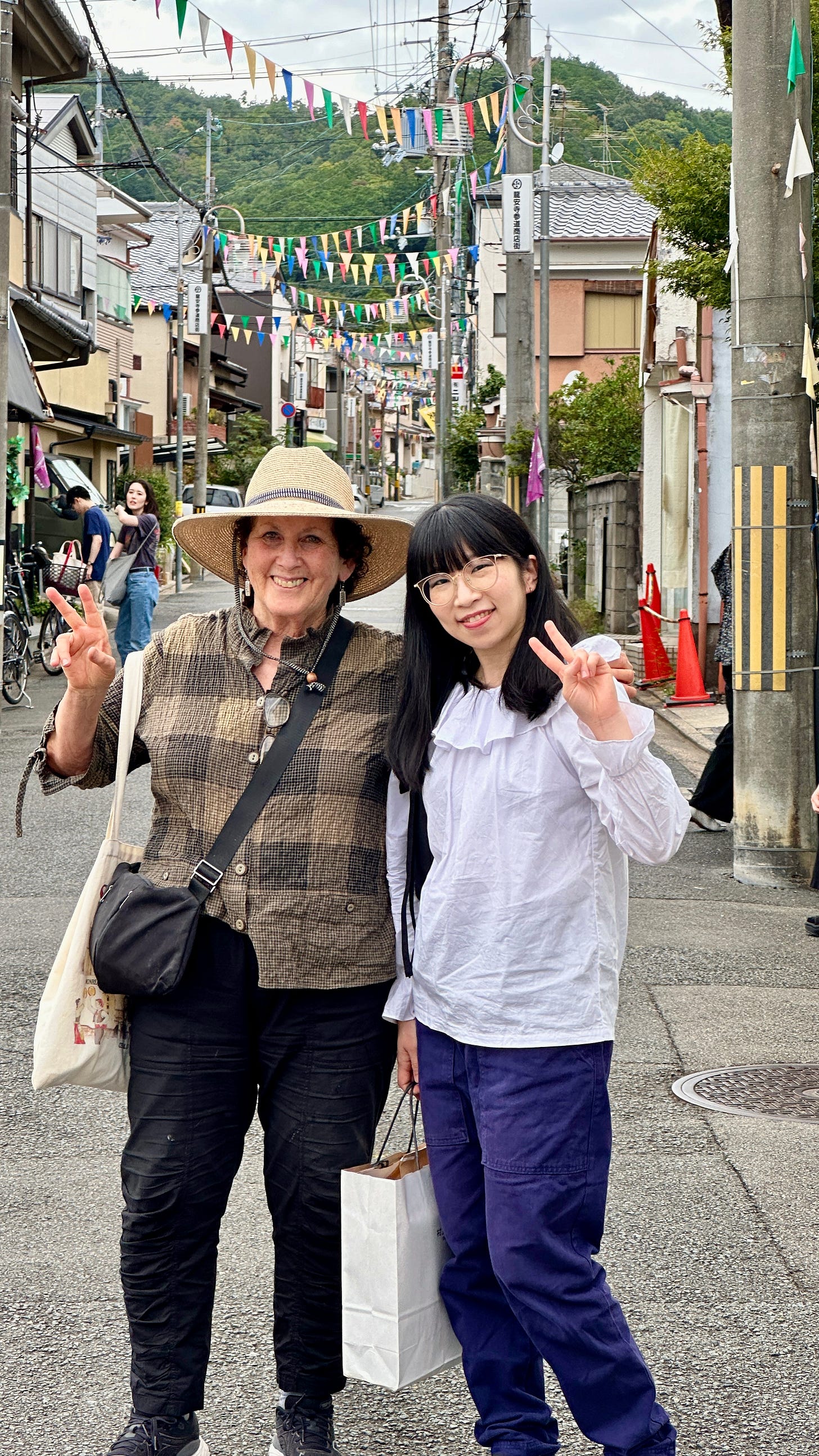


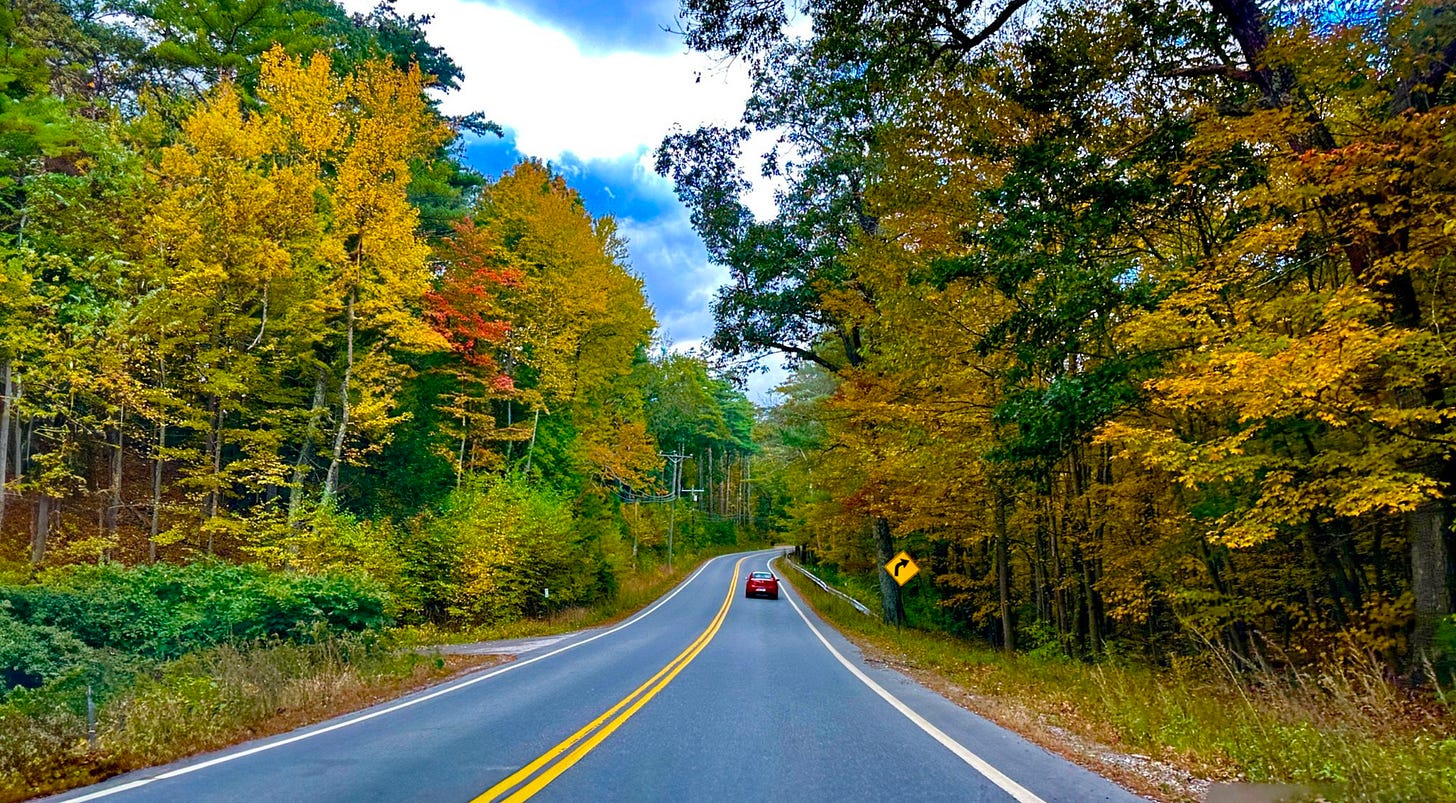
I love a mystery! That bakery is right up my alley.
Sincerely, Nancy Drew
Nagisa - means calm beach. Which is an interesting word(s) if you think about it. If you consider a beach to be the sandy area bordering an ocean/sea, they're ALL calm. Sand basically just sits there. But if your definition of beach includes the water, then clearly we can go all the way from calm to violent. Me? I think beach does not include the water and so I'd consider the "calm" part redundant. Good nobody asked me when they coined the word!